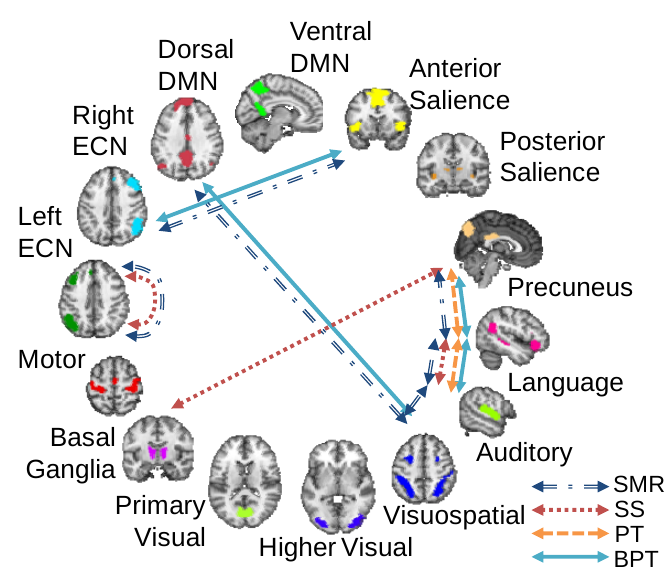Section: New Results
Bootstrapped Permutation Test for Multiresponse Inference on Brain Behavior Associations.
Despite that diagnosis of neurological disorders commonly involves a collection of behavioral assessments, most neuroimaging studies investigating the associations between brain and behavior largely analyze each behavioral measure in isolation. To jointly model multiple behavioral scores, sparse mul-tiresponse regression (SMR) is often used. However, directly applying SMR without statistically controlling for false positives could result in many spurious findings. For models, such as SMR, where the distribution of the model parameters is unknown, permutation test and stability selection are typically used to control for false positives. In this paper, we present another technique for inferring statistically significant features from models with unknown parameter distribution. We refer to this technique as bootstrapped permutation test (BPT), which uses Studentized statistics to exploit the intuition that the variability in parameter estimates associated with relevant features would likely be higher with responses permuted. On synthetic data, we show that BPT provides higher sensitivity in identifying relevant features from the SMR model than permutation test and stability selection, while retaining strong control on the false positive rate. We further apply BPT to study the associations between brain connec-tivity estimated from pseudo-rest fMRI data of 1139 fourteen year olds and be-havioral measures related to ADHD. Significant connections are found between brain networks known to be implicated in the behavioral tasks involved. Moreover , we validate the identified connections by fitting a regression model on pseudo-rest data with only those connections and applying this model on resting state fMRI data of 337 left out subjects to predict their behavioral scores. The predicted scores are shown to significantly correlate with the actual scores of the subjects, hence verifying the behavioral relevance of the found connections.
Real data results: Statistically significant connectivity differences between populations (a) Significant network connections found on pseudo-rest fMRI data. (b) Pearson’s correlation between predicted and actual scores with p-values noted. Each set of three bars (top to bottom) correspond to spatial working memory strategy, spatial working memory between errors, and rapid visual information processing accuracy scores. Significance is declared at p < 0.05.More information can be found in [43] .


